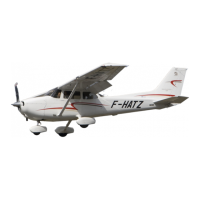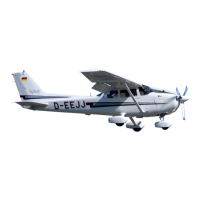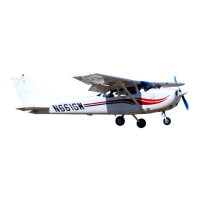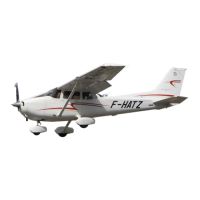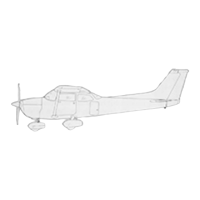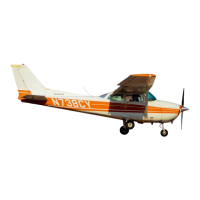SECTION 7
AIRPLANE AND SYSTEMS DESCRIPTION
AIRFRAME (Continued)
CESSNA
MODEL 172S NAV
III
The empennage (tail assembly) consists of a conventional vertical
stabilizer, rudder, horizontal stabilizer, and elevator. The vertical
stabilizer consists
of
a spar, formed sheet metal ribs
and
reinforce-
ments, a wraparound skin panel, formed leading edge skin and a
dorsal. The rudder
is
constructed
of
a formed leading edge skin
and
spar with attached hinge brackets
and
ribs,
a center spar, a wrap
around skin, and a ground adjustable trim tab at the base of the
trailing edge. The top
of
the rudder incorporates a leading edge ex-
tension which contains a balance weight.
The
horizontal stabilizer is constructed
of
a forward and aft spar,
ribs
and stifieners, center, left, and right wrap around skin panels,
and
formed leading edge skins. The horizontal stabilizer also
contains the elevator trim tab actuator.
Construction of the elevator consists
of
formed leading edge skins,
a forward spar, aft channel,
ribs,
torque tube
and
bellcrank, left
upper
and
lower
"V"
type corrugated skins, and right upper
and
lower
"V"
type corrugated skins incorporating a trailing edge cutout
for the trim tab. The elevator tip leading edge extensions
incorporate balance weights. The elevator trim tab consists of a
spar,
rib,
and upper and lower
"V"
type corrugated skins.
FLIGHT CONTROLS
The airplane's flight control system (Refer to Figure 7-1) consists
of
conventional aileron, rudder, and elevator control surfaces. The
control surfaces are manually operated through cables
and
mechanical linkage using a control wheel for the ailerons
and
elevator,
and
rudder/brake pedals for the rudder.
TRIM
SYSTEM
A manually operated elevator trim system is provided (Refer to
Figure 7-1). Elevator trimming is accomplished through the elevator
trim tab
by
utilizing the vertically mounted trim control wheel
in
the
cockpit. Forward rotation of the trim wheel will trim nose down;
conversely, aft rotation will trim nose
up.
7-6
U.S.
172SPHAUS-OO
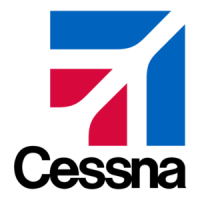
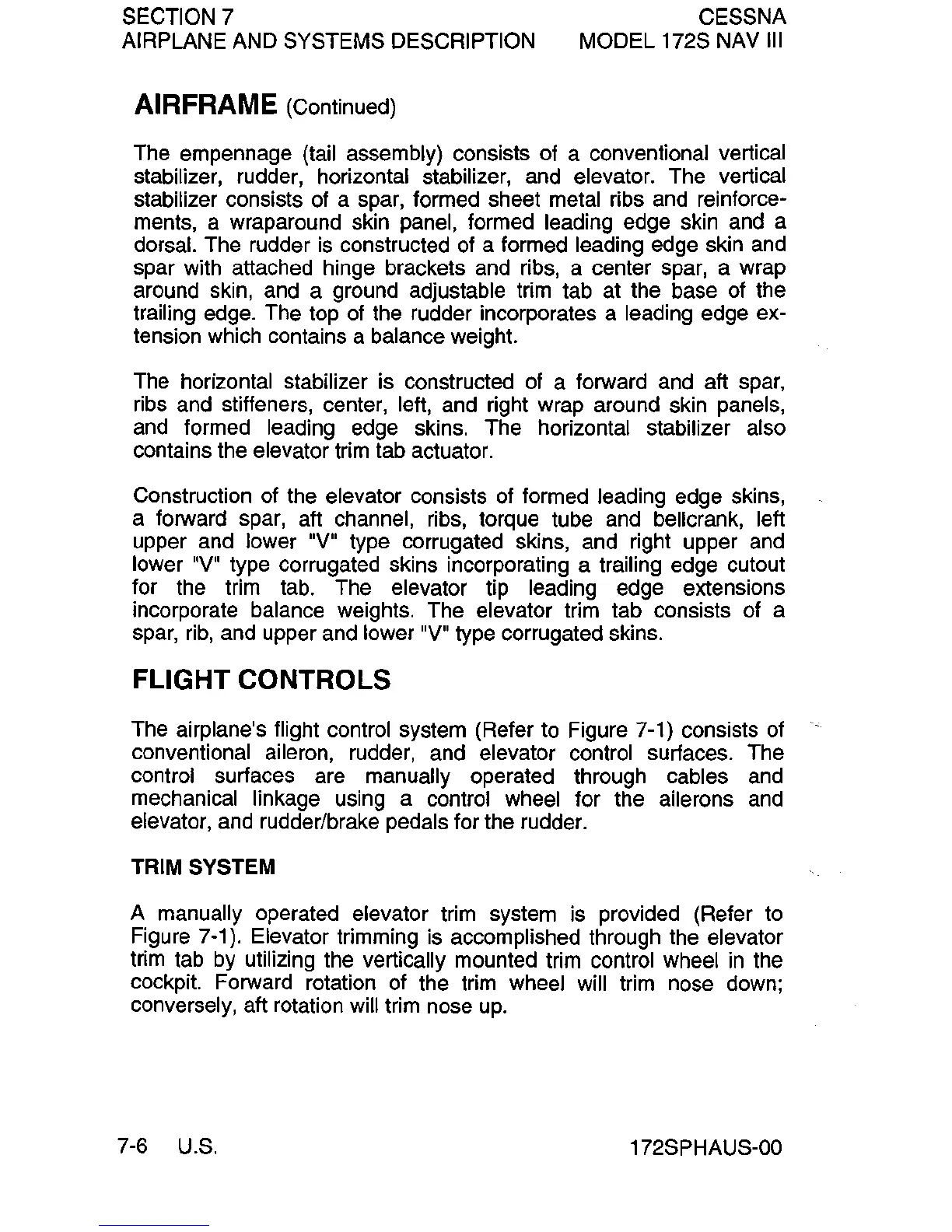